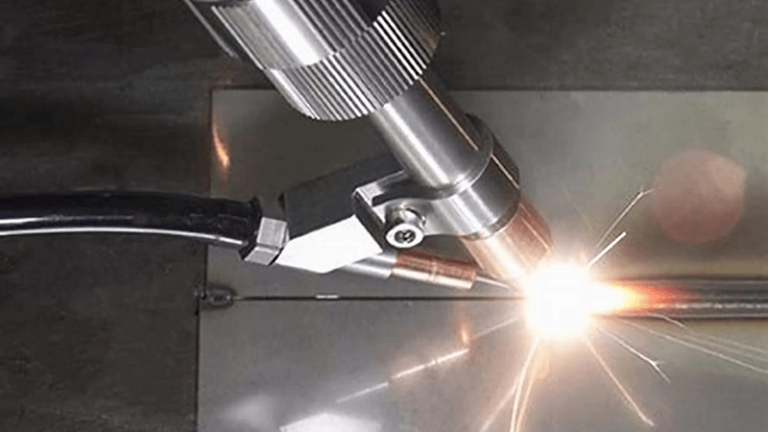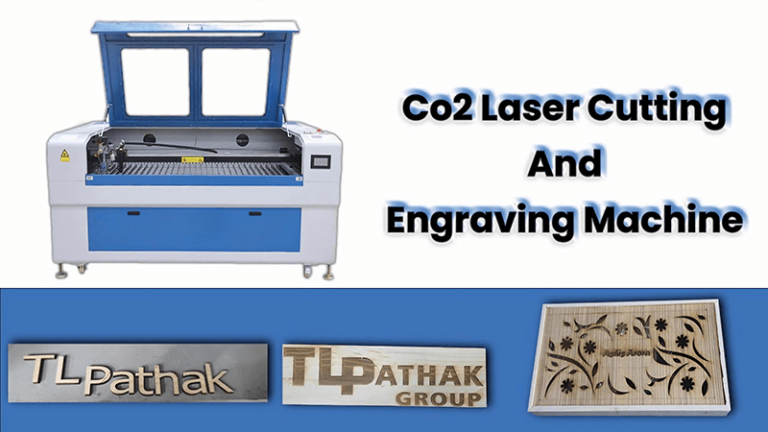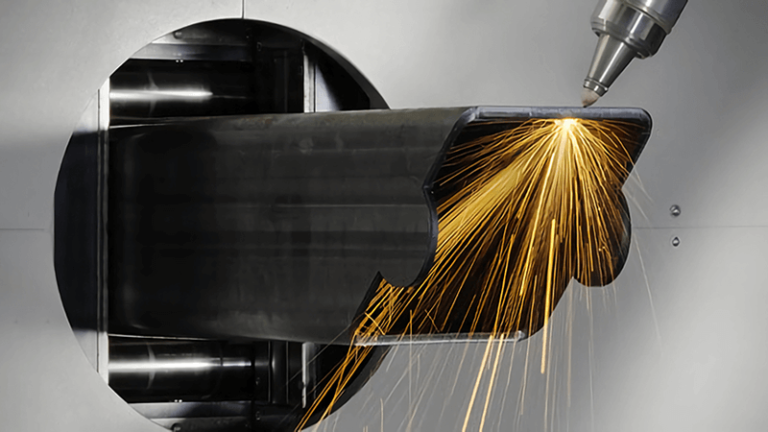When you’re looking for perfection in laser cutting, every little detail matters. A slight misalignment, a damaged lens, or a cooling system failure can throw off your entire cut. But why is this precision so critical?
Each component of a laser cutting machine plays a vital role in achieving high precision. From generating a focused laser beam to controlling its movement with advanced software systems, every part must function optimally to ensure accurate cuts. Regular maintenance and proper setup are essential to maximize performance and precision in laser cutting applications.
Understanding how these components work together is crucial for any professional looking to get the most out of their machine.
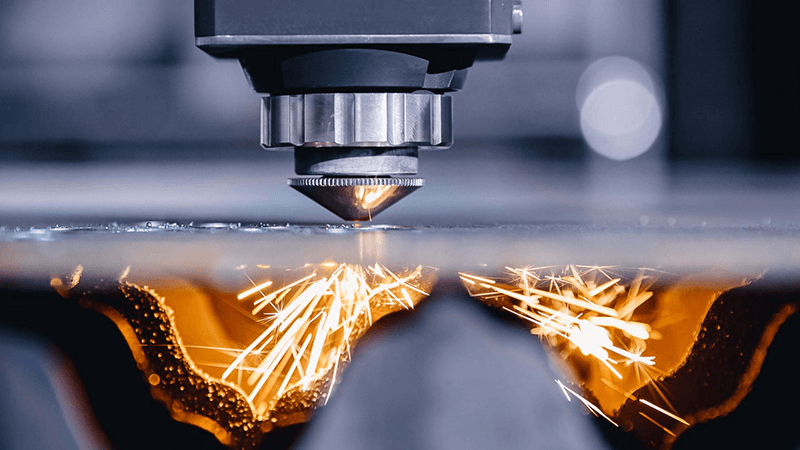
What Makes Precision So Important in Laser Cutting?
Laser cutting is all about clean, sharp, and accurate cuts. Whether you’re cutting metal for automotive parts or acrylic for signage, precision ensures that the pieces fit perfectly, maintain structural integrity, and meet all quality standards. The lack of precision can lead to waste, poor product quality, and inefficiency in the production process. So, getting each part of the machine in top shape is essential.
Precision is key to maintaining a high-quality output, reducing material waste, and improving production timelines. You wouldn’t want to cut corners (pun intended) when it comes to precision, would you?
The Key Components of a Laser Cutting Machine
Now let’s dive into the individual parts of the laser cutting machine. Each one contributes to the overall precision, but what role does each part play?
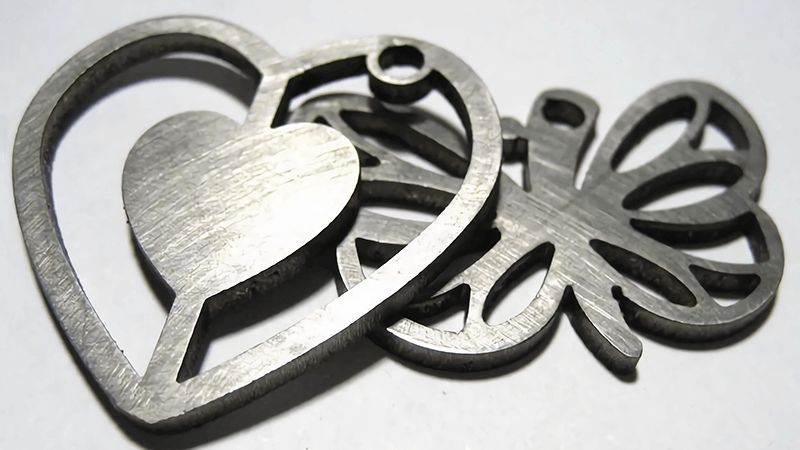
Laser Source
The laser source is the heart of any laser cutting machine. It generates the focused beam of light that will do all the cutting. A high-quality laser source provides the beam stability needed for precise cuts. Without it, your cuts would be inconsistent, with variations in power leading to uneven edges or even failure to cut through materials.
In short, the laser source directly impacts the power and accuracy of the cut. Higher wattage lasers provide more energy for cutting thicker materials, while lower wattage lasers allow for finer, more intricate cuts on thinner materials. Understanding the specifications of the laser source helps you achieve precision with your projects.
| Feature | IPG | Raycus | Max |
|---|---|---|---|
| Power Range | 1 kW to 20 kW (up to 12 kW in some models) | 1 kW to 20 kW (up to 30 kW in some models) | 1 kW to 40 kW |
| Beam Quality | Exceptional beam quality for high precision | High beam quality, suitable for various applications | Excellent beam quality with good focus |
| Efficiency | Up to 50% electro-optical conversion | Generally around 25% | Competitive efficiency, varies by model |
| Reliability | Very high reliability and long lifespan | Reliable with good performance | Known for durability and consistent output |
| Applications | Industrial cutting, welding, additive manufacturing, laser cleaning | Metal marking, cutting, welding | Metal cutting, welding, marking |
| Cost | Higher initial investment | More cost-effective | Competitive pricing with good performance |
Beam Delivery System
The beam delivery system is the pipeline that channels the laser beam from the source to the cutting head. The beam needs to stay focused and aligned during this journey. Misalignments or imperfections in the beam delivery system can lead to distorted cuts and inaccuracies.
Even slight misalignments can cause significant errors in the final result. The beam delivery system works hand-in-hand with the laser source to ensure that the beam remains steady and true.
The beam delivery system in high-power laser systems (above 1 kW) relies on several key components to ensure precision and efficiency. The fiber optic cable transmits the laser beam with minimal loss and maintains beam quality over long distances. A beam collimator converts divergent light into a parallel beam, crucial for consistent focus and intensity. The beam expander increases the beam diameter before it reaches the cutting head, enhancing focus and reducing heat-affected zones for better cutting quality.
Additionally, optional components like beam switches and benders offer flexibility in directing the beam to multiple workstations or adjusting its path without significant power loss. The cutting head, with its focusing lens and nozzle, concentrates the laser energy to achieve high-precision cuts. Proper alignment and regular calibration of these components are essential to maintain beam intensity, cut quality, and avoid premature wear, ensuring optimal performance in high-power laser applications.
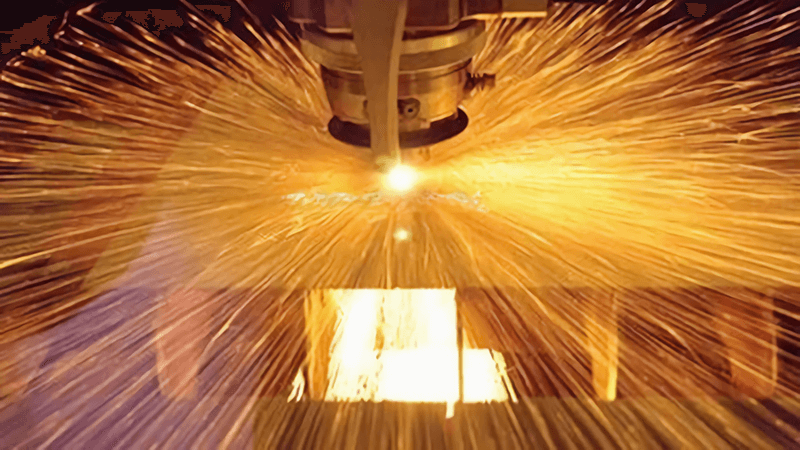
Focusing Lens
Once the laser beam reaches the cutting head, it passes through a focusing lens that focuses the beam onto the material. The quality and condition of the lens can have a dramatic effect on the precision of your cuts. A lens with the wrong focal length or one that’s worn out could cause the beam to diverge, leading to cuts that are either too shallow or too deep.
It’s crucial to regularly inspect and replace lenses to ensure that your cuts remain precise. A high-quality lens will keep the laser beam focused and provide sharp, clean cuts.
Key Considerations for Selecting Laser Lenses in Metal Cutting
When choosing a laser lens for metal cutting, the focal length, material, and design features are critical for achieving optimal performance. A 2.0-inch or 3.0-inch lens offers a good balance between precision and cutting depth, making them ideal for general metal cutting applications. For thicker materials, a 3.0-inch lens is often preferred, while a 1.5-inch lens is better suited for fine details and thin materials but has a shallower focal depth.
The material of the lens plays a vital role in performance. Zinc Selenide (ZnSe) is common for CO2 lasers due to its high transmission rates, while fused silica is preferred for high-power fiber lasers due to its thermal stability and efficiency. Additionally, lenses with anti-reflective coatings and specialized designs like aspherical lenses can further improve cutting efficiency and reduce the heat-affected zone, leading to higher-quality results and longer operational life.
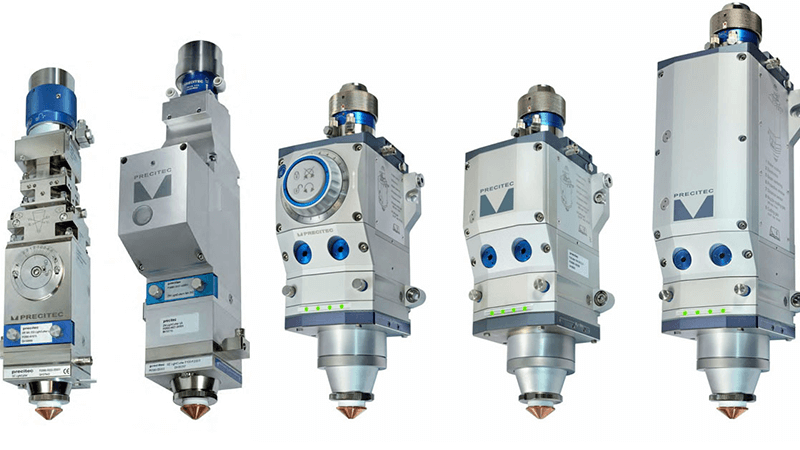
CNC Controller
The CNC controller is the brain of the laser cutting machine. It controls the movement of the cutting head and adjusts the laser beam power and speed according to the design and material specifications. The precision of the cuts depends on the accuracy of the controller in interpreting the design and executing it with the correct settings.
Modern CNC controllers also allow for real-time adjustments, which is essential when working with complex designs. Precision relies on the controller’s ability to make those adjustments without compromising on the final result.
| Feature | Bochu | Raytools |
|---|---|---|
| Model Examples | FSCUT2000, FSCUT4000, FSCUT8000 | AX3000 |
| Control Type | Open-loop and closed-loop systems available | Primarily open-loop system |
| Power Range | Up to 8 kW and above for high-end models | Suitable for various power levels, typically up to 3 kW but can handle higher with specific models |
| User Interface | Customizable HMI with easy process settings | User-friendly design with video support |
| Performance Features | Advanced functions like automatic adjustment, cross-coupling control, and intelligent perforation | Designed for efficient cutting with a focus on ease of operation |
| Software Capabilities | CypCut software for optimized processing | Integrated software for various industrial applications |
| Application Versatility | Suitable for medium to ultra-high power applications across industries like automotive and aerospace | Versatile across multiple industries including machinery repair and manufacturing |
| Installation and Debugging | Easy installation with comprehensive solutions | Designed for straightforward setup and operation |
| Warranty and Support | Generally offers support through distributors | Comes with a 1-year warranty and after-sales service |
Motion System
The motion system moves the cutting head along the X, Y, and Z axes, following the design specifications. Whether it’s a gantry or a Cartesian motion system, the precision of these movements is vital for the overall cutting accuracy. If the motion system is sluggish or prone to errors, it could result in misaligned cuts or wasted material.
The type of motion system you choose for your laser cutting machine will affect the precision of your work. For instance, Cartesian motion systems are known for their high accuracy, making them ideal for intricate designs.
The motion system in a fiber laser cutting machine comprises several critical components that work together to ensure high precision and efficiency:
Linear guides provide smooth movement paths.
Rack and pinion systems convert rotational motion into linear movement.
Motors, particularly servo and linear types, drive the system with high accuracy.
The CNC controller coordinates all movements based on design specifications.
Together, these elements create a robust motion system capable of delivering precise cuts in various materials while optimizing operational efficiency. Proper selection and maintenance of these components are essential for achieving optimal performance in laser cutting applications.
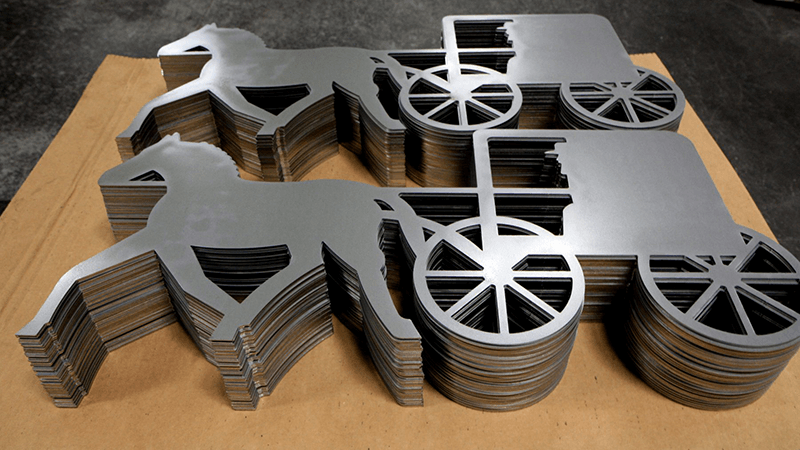
Stable Worktable
A reliable worktable is necessary to keep the material in place during cutting. If the material shifts or vibrates during the cutting process, your cuts could become misaligned. The worktable must remain stable and capable of securing various materials at different thicknesses.
Worktables that allow for precise clamping and adjustments ensure that the material stays in the right position, maintaining the accuracy of the cut throughout the entire process.
The weight and design of the worktable vary depending on the power output of the laser cutting machine. Here’s a summary based on the available data regarding worktable weights for different power ranges:
| Power Range | Worktable Weight (kg) | Material |
|---|---|---|
| 1 kW - 3 kW | 700 | Steel |
| 3 kW - 6 kW | 2200 | Steel |
| 6 kW - 10 kW | 5000 | Plate Steel |
| 10 kW - 20 kW | 8000 | Plate Steel |
Cooling and Exhaust Systems
Heat is a natural byproduct of laser cutting, and too much heat can distort both the material and the cut itself. Cooling systems help regulate temperature, preventing the workpiece from warping or melting. Exhaust systems remove debris and smoke from the cutting area, keeping the beam path clear and enhancing precision.
Without effective cooling and exhaust systems, your machine might struggle to maintain consistency, especially during long production runs.
Regular Maintenance and Calibration
Even the best machine can lose its precision if it’s not properly maintained. Regular calibration and maintenance are essential to keep the components working at their peak performance. A minor issue with one component, like a misaligned lens or worn-out belts in the motion system, can quickly turn into a big problem.
Make sure to schedule regular maintenance checks to keep your machine in top shape. This is an investment that will pay off in the long run.
How to Optimize Your Laser Cutting Machine for Maximum Precision
Now that we’ve covered the parts of the machine, how can you ensure that you’re getting the most out of your laser cutting machine?
Invest in Quality Components: The better your components, the more precise your cuts will be.
Regularly Calibrate Your Machine: Ensure that all components are aligned and functioning correctly.
Choose the Right Machine for Your Needs: Different machines are suited for different tasks. Don’t overpay for unnecessary features or undersize your equipment.
Conclusion
Each part of a laser cutting machine contributes to its precision, from the laser source to the cooling system. Regular maintenance, high-quality components, and proper setup ensure that your cuts remain accurate and efficient. For businesses looking to boost their cutting precision, Kirin Laser offers top-tier machines designed for optimal performance. Contact us today for more details and make the smart investment in precision!
Reference:
- " Why Metal Laser Cutters are the Future of Fabrication?" from Kirin Laser.
- "Laser Cutting Machine Specification: A Comprehensive Guide“ from Machine Tools


